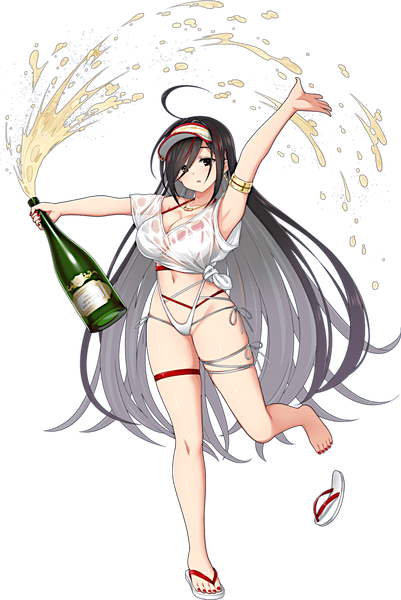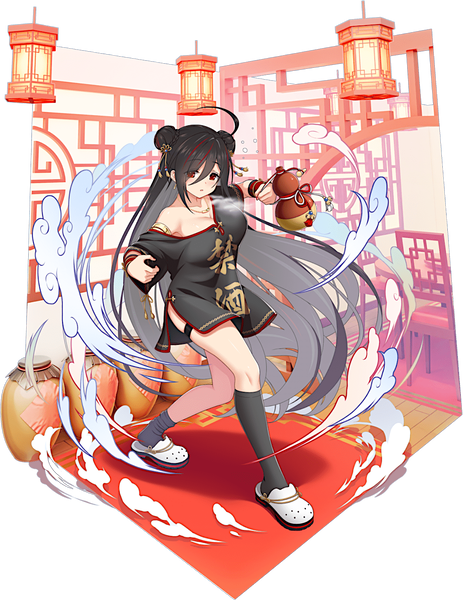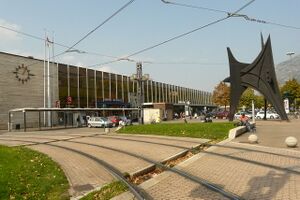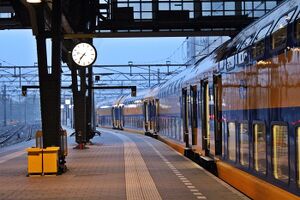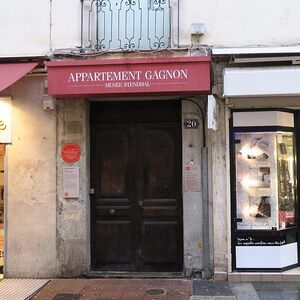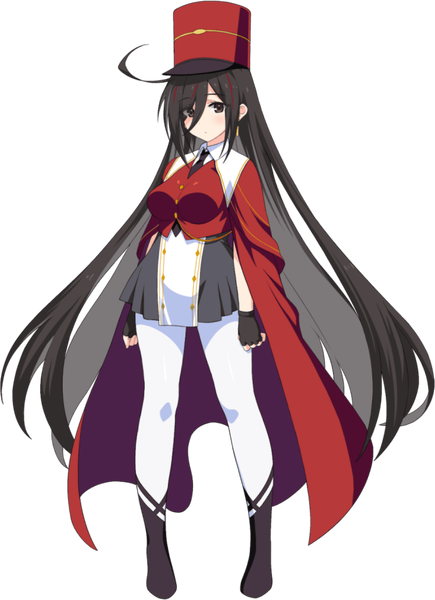
Grenoble
| Grenoble | |||||
|---|---|---|---|---|---|
| Japanese Name | グルノーブル | ||||
| Weapon | |||||
| Race | Human | ||||
| Nationality | |||||
| Birthday | January 23 | ||||
| Constellation | Aquarius | ||||
| Talents | Martial arts | ||||
| Likes | Alcohol, Tobacco, Gambling, Precious metals, Money | ||||
| Dislikes | Herself | ||||
| Strengths | Rich in life experience | ||||
| Weaknesses | Pessimistic, Susceptible to worldly pleasures | ||||
| Hobbies | Drinking alcohol, Growing plants | ||||
What now... You want me to introduce myself? That's tough... I've lived over two hundred years at this point, I guess. Led quite a tumultuous life, can't really sum it up in a few words. For the time being, I can serve to take hits from baddies in your place. Sure.
Layers
| Icon | Title | Release Date | Where to Obtain |
|---|---|---|---|
| [Resident of the Arena] Grenoble | 2021 September 9 | [Training Camp - Grenoble] Event Reward | |
| [Two Hundred Years Imprisonment] Grenoble | 2021 September 1 | [Colosseum of Purgatory] Event Reward | |
| [A Little Love Story on the Beach] Grenoble | 2023 July 21 | [Altar of Judgement - Idol Zombie Chan] Event Reward | |
| [Sorrowful Curse] Grenoble | 2021 August 31 | [Colosseum of Purgatory] Pick Up Gacha, Premium Gacha | |
| [Getting Stronger When Getting Drunker] Grenoble | 2023 October 24 | [Arrogant Military Princess and the Purgatory Drunken Fist] Limited Gacha |
Skills
Trivia
- Grenoble shares her birthday with Marie-Henri Beyle, better known as Stedhal, in 1783, known for his works The Red and the Black (1830) and The Charterhouse of Parma (1839). His birthplace is in Grenoble, France.
- Grenoble's strong red-black motif and backstory is a homage to Stendhal's most famous work, The Red and the Black (Le Rouge et le Noir). It chronicles the attempts of a provincial young man to rise socially beyond his modest upbringing through a combination of talent, hard work, deception, and hypocrisy. He ultimately allows his passions to betray him.
- The arena-like structure in the background of [Sorrowful Curse] may be a reference to the particle accelerator ring of the European Synchrotron Radiation Facility, a joint research facility situated in Grenoble, France. Grenoble is a major scientific centre, especially in the fields of physics, computer science, and applied mathematics.
- While there are no historical colosseums in Grenoble, the Stade olympique de Grenoble did exist formerly as a temporary stadium in Grenoble, France. Built to only host the opening ceremonies for the 1968 Winter Olympics, the stadium was immediately disassembled following the games. The stadium held 60000 spectators.
- The words written on the shirt in [Getting Stronger When Getting Drunker] is Japanese kanji/Chinese hanzi for "No Alcohol (禁酒)".
Counterpart
Grenoble is the main railway station located in Grenoble, Isère, France. The station was opened on 3 January 1849 and is located on the Lyon–Marseille (via Grenoble) railway and Grenoble–Montmélian railway. The train services are operated by SNCF. The station was rebuilt in 1967 for the 1968 Winter Olympics.
The station is currently undergoing reconstruction, which includes the electrification of the Valence-Grenoble route and the Grenoble-Chambéry route.Established at an altitude of 212 meters, the Grenoble station is located 130.538 kilometres off the line from Lyon-Perrache to Marseille-Saint-Charles (via Grenoble) between the open stations of Saint-Egrève-Saint-Robert and Pont-de-Claix. It is also the origin of the line from Grenoble to Montmélian, which then precedes the station of Échirolles.
In the past, the line took a route more north, closer to the centre of Grenoble. However, as part of the city's preparations for the 1968 Winter Olympics, the route was moved south, next to the Rocade Sud. A station was opened at Eybens and was used to serve the nearby Olympic Village. This deviation added about 3 km (1.9 mi) to the total length of the track. So as not to have the laborious task of changing all the milestones along the route, this new section was given distances as if it were part of the Ligne de Lyon - Grenoble, all the while staying part of this line.
The station has two reception buildings. The main building is located on the east side, towards the center of Grenoble. It includes an automatic ticket office, various passenger information services, waiting rooms and various shops (press, restaurants and other). A second building is located on the west side, towards the Europole sector and the courthouse. It includes an automatic ticket office, a waiting room, a restaurant service and a station piano. Wikipedia
Appartement Natal de Stendhal is a townhouse located in downtown Grenoble, rue Jean-Jacques Rousseau, formerly rue des Vieux-Jésuites. The house is located at No. 14 of Jean-Jacques-Rousseau Street, a mainly commercial street, located in the Notre Dame district, one of the oldest sectors of the city corresponding to the interior of what was the medieval enclosure, between St. Clair Square and Grande Rue. This section of the street is accessible to pedestrians (a commemorative plaque and an information panel is fixed near the door of the house) however, the place is still considered private, and is closed except for the days where reserved visits are authorized. The nearest tramway stations in Grenoble are Hubert Dubedout - Maison du Tourisme and Sainte-Claire - Les Halles.
On January 23, 1783, Henri Beyle was born in Grenoble in what is still called the rue des Vieux Jésuites. It is the second floor apartment of Chérubin Beyle (lawyer at the Parliament of Grenoble) and Henriette Gagnon. Young Henri lived there until the age of seven, but after his mother's death in 1790, he lived with his maternal grandfather in a house not far from his birthplace, overlooking the Grande Rue, the Place Grenette and the city garden.
This house served as the home of the Musée de la Résistance Dauphinoise, the first museum in Grenoble to evoke local resistance. It was inaugurated on April 23, 1966, under the municipality of Hubert Dubedout, as part of the national day of the Deportation, before moving to rue Hébert in 1994. The place was opened to the public for the first time in 1995, during the twelfth edition of the Heritage Days, in the presence of Michel Destot, mayor of Grenoble at the time. The two facades, one on the street and the other on the courtyard, the roof and the staircase of the building, as well as the apartment on the second floor are listed as historical monuments since July 11, 2000. Wikipedia
Map
Gallery
- Pages using Tabber parser tag
- Pages using DynamicPageList3 parser tag
- Weapon Gauntlet
- Human
- Verforet
- Aquarius
- Element Blow
- Element Water
- Element Fire
- Train Knights
- France


